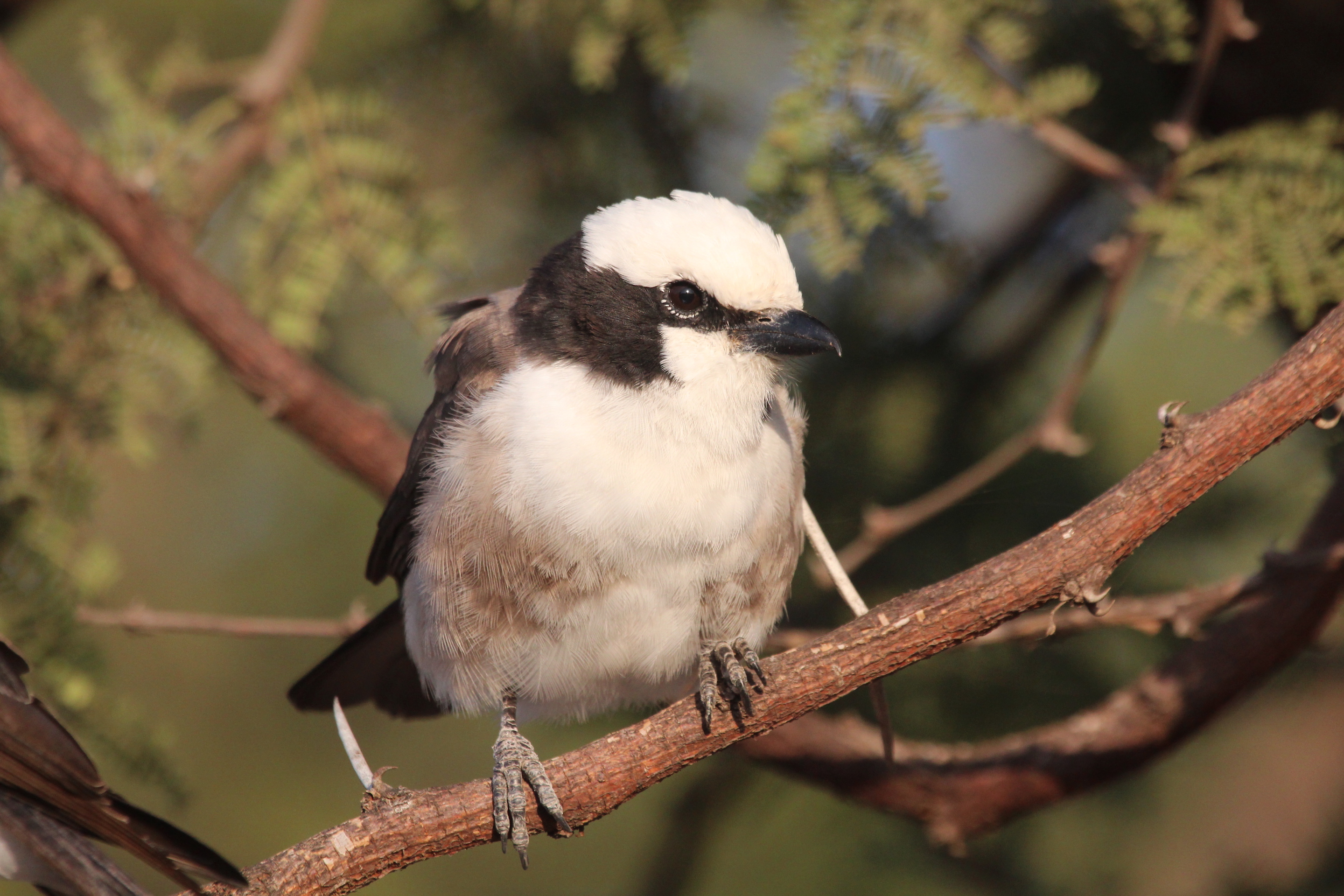PhD candidate in the Department of Biology discovers new bird family
June 14, 2023 - Irene Gray
 For nearly two centuries, researchers have speculated on the classification of two species of shrikes found in central and southern Africa. Now, because of the simple curiosity of one PhD candidate in the Department of Biology, the longstanding mystery surrounding these birds has finally been solved thanks to modern technology and the valuable information that museums provide.
For nearly two centuries, researchers have speculated on the classification of two species of shrikes found in central and southern Africa. Now, because of the simple curiosity of one PhD candidate in the Department of Biology, the longstanding mystery surrounding these birds has finally been solved thanks to modern technology and the valuable information that museums provide.
Jenna McCullough’s important discovery began like many other discoveries do: by accident. Her dissertation research actually focuses on kingfishers found in Southeast Asia and the South Pacific but it was a side project that inspired her to look more closely at white-crowned shrikes.

McCullough and her advisor, Associate Professor of Biology, Michael Andersen, were investigating the relationships within a large group of songbirds when they noticed a small but interesting result on the familial relationships of two species of African shrikes.
Through this research, they collected a genomic dataset of thousands of gene regions that they used to investigate the relationships of these species to other closely related groups of birds.
The Northern and Southern White-crowned Shrikes have long been considered to be part of the Laniidae, or shrike, family. From McCullough’s data, however, the genetic make-up of the two species of white-crowned shrikes was starkly different from other shrike species.
Of the discovery, McCullough said, “When we finally got the results, I laughed and said, ‘There you have it, nearly two centuries of taxonomic confusion solved: white-crowned shrikes are not actually shrikes at all!”
The application of molecular data to study evolutionary relationships of birds has revolutionized avian taxonomy. It was long considered that shrikes were not even closely related to the Corvidae, or the crow and jay, family.
Within the last ten years, the relationships between many bird families in this part of the avian tree of life such as drongos, fantails, vangas, shrikes, crows, and more, have been studied extensively. However, the relationships of the white-crowned shrikes were still mysterious. Upon her discovery, McCullough decided to dig a little deeper into the historical taxonomic literature on these bird families.

Her research took her as far back as 1836 when the description of one of the white-crowned shrikes was first described as being more closely related to crows and jays in the Corvidae family. However, even in the first description of the species, zoologist Andrew Smith had doubts on to which family it belonged to: “[Eurocephalus anguitimens] true place may be found in another family, and the resemblances, particularly as regards its habits, may be those of analogy and not affinity.” (Smith,1836).
Within two decades after the first species description, the French taxonomist Charles L. Bonaparte published his monograph of the shrike family in which both species of white-crowned shrike were included. Since then, both species were considered shrikes even though there were questions raised by other ornithologists.
Previous work on the systematics of crows, shrikes, white-crowned shrikes, and other related birds had been limited by the size and scope of genetic datasets used. To overcome this, McCullough incorporated samples of all genera within crows and shrikes and sequenced thousands of gene regions to get the best picture yet of their evolutionary histories.
What she found is that the two species of white-crowned shrikes have a more recent common ancestor with the crow family as compared to the shrike family. She also discovered that they are quite different genetically from the crow family.
In addition to this data, there are key behavioral differences between the white-crowned shrikes and other species within the Laniidae and Corvidae families.
Notably, white-crowned shrikes do not impale their food or store it for later consumption the way that shrikes or corvids do. Additionally, their diet is not as diverse as corvids. white-crowned shrikes tend to focus more on foraging for flying insects (although they have occasionally been observed eating berries) whereas Corvids tend to be opportunistic feeders with incredibly variable diets.
From her findings, McCullough determined that the Northern and Southern white-crowned shrikes should be classified into their own family, called Eurocephalidae.
Her research supporting this assertion was recently published in Ornithology in a paper titled, “Ultraconserved elements support the elevation of a new avian family, Eurocephalidae, the white-crowned shrikes.”
There are only 253 families identified by experts within the field of ornithology, making McCullough’s discovery particularly significant.
While the advancements in technology since the 1800’s was certainly a significant contributor to this discovery, McCullough credits the many people who have dedicated their lives to the collection and preservation of biodiversity specimens worldwide. This includes the Museum of Southwestern Biology.
She says, “I would not have been able to do this study, or any of my research really, without being loaned genetic material from museum collections. Museums are critically important for understanding the ecology and evolution of life because they truly are our libraries of biodiversity. Every specimen is like a book - and libraries collect books not knowing who will read them in the future. The zoologists who collected and preserved these birds could not have imagined that decades or even centuries later, ornithologists would still be using them in new and exciting ways like this.”
Ensuring that this historical preservation continues on through the generations is of vital importance, as McCullough explains, “So much of our knowledge of biodiversity stems from museum collections like those housed at the Museum of Southwestern Biology. We really rely on people who have done this work in the past – and present – so that we can continue to make significant discoveries about the world around us in the future.”
